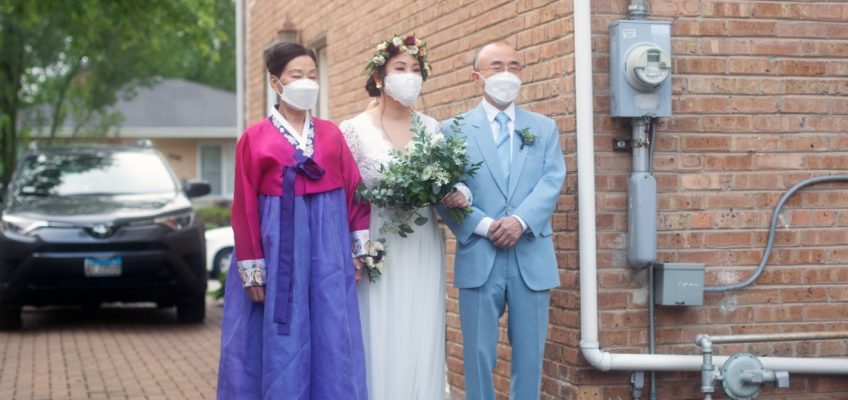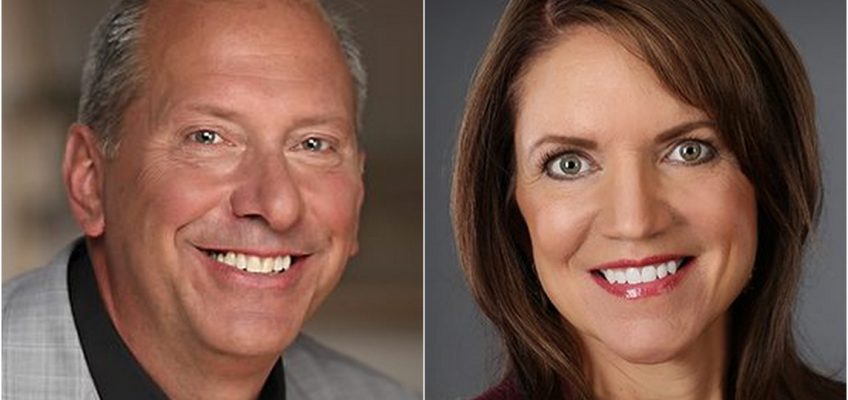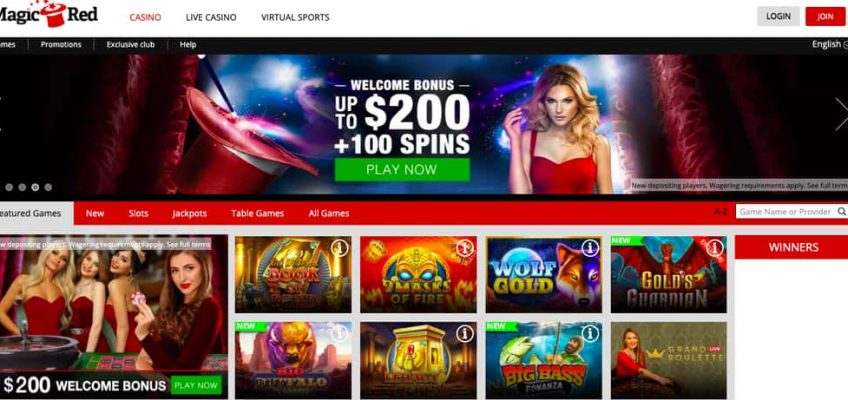The March 21, 2020, wedding of Julie Samuels and Joe Hillyer in Montclair, New Jersey, ushered in an unparalleled time for the weddings coverage of The New York Times. Because of the coronavirus pandemic and its crowd-size and social-distancing mandates, couples had to get creative about how to pull off weddings.
Samuels and Hillyer had their nuptials on the front porch of their home as a honking convoy of friends and family drove in circles around the block cheering them on.
A couple who met at the Dunkin’ drive-thru window in Edmond, Oklahoma — she as an employee, he as a customer — said their vows through that same window with guests watching from the parking lot. Fashion model and labor activist Sara Ziff married photographer Reed Young at a train station in Philipstown, New York. And some couples married with no one else in the room, their officiant beaming in over Zoom.
Their reasons for not wanting to wait varied: to honor a long-awaited wedding date, to secure health insurance or to follow their dream of starting a family.
If weddings looked different five years ago, the permutations of romance that led to them held steady. Canceling weddings became commonplace. Love endured. Here is a look at four couples who married during COVID despite the difficulties involved, and their reflections on how saying “I do” at such a fraught time shaped the relationships they’re in now.
Julie Samuels, Joe Hillyer
Andy Swist, a neigbor, holds up a sign during the wedding of Joe Hillyer, left, and Julie Samuels at their home in Montclair, N.J., on March 21, 2020. After raising a glass with neighbors, Samuels says, “we went inside and stayed there for two yeas.” (Krista Schlueter/The New York Times)
“The day of our wedding, we raised a glass with Brian and Andy across the driveway,” said Samuels, referring to Brian Juergens and Andy Swist, neighbors who decorated their own porch with bright crepe paper balls to help the couple celebrate. “Then we went inside and stayed there for two years.”
Samuels, now 58, is an intellectual property and commercial transactions lawyer in Manhattan. Hillyer, 63, is the director of logistics and postal affairs at Scholastic and works remotely from the house in Connecticut the couple moved into in 2024.
Julie Samuels and Joe Hillyer, who wed during the coronavirus pandemic, at their home in Connecticut on March 1, 2025. “We hunkered down and took care of each other,” Hillyer says. (James Estrin/The New York Times)
The spaciousness of their rented home in Montclair helped them weather the first few years of marriage, which might have been more challenging in closer quarters. Not every newlywed couple, they agree, benefits from so much togetherness.
“I don’t recommend being locked inside with your new husband 24/7 under stressful circumstances,” Samuels said. “There were moments, I think, of ‘familiarity breeds contempt.’”
Both learned to let those moments dissolve behind closed doors.
By day, they retreated to separate home offices, checking in with each other to coordinate a dinner plan.
Hillyer, whose love of cooking helped him win Samuels’ heart when they started dating in 2007, became an even more accomplished cook during lockdown, both said. By night, “we hunkered down and took care of each other,” Hillyer said.
They hesitate to say they’re glad they started their marriage with the world in crisis. But “having weathered all that and come out the other side still wanting to be married to each other — ultimately it’s a testament to this relationship,” Samuels said.
Now that the pandemic emergency is over, she said, “we’re both really good at expressing appreciation for what the other one is doing — and whenever one of us faces something, the other one is 1,000% in that person’s corner.”
Kirsten Wazalis, Glenn Leader
Kirsten Wazalis and Glenn Leader at their wedding in Philadelphia on April 24, 2020. They were married outside their rowhouse as friends in Philadelphia Flyers jerseys watched from idling cars. (Hannah Yoon/The New York Times)
Kirsten Wazalis and Glenn Leader were married wearing “Mr.” and “Mrs.” face masks outside their Philadelphia row house in April 2020 as friends in Philadelphia Flyers jerseys watched from idling cars.
An undated family photo shows Glenn Leader and Kirsten Wazalis, aka “Pop Pop” and “Honey,” enjoying time with their grandchildren. The couple wed during the coronavirus pandemic. (Kirsten Wazalis via The New York Times)
When COVID roared in, they didn’t think they had anything new to learn about each other. In their eight years as a couple, they had weathered medical crises brought on by Cowden syndrome, the rare genetic disorder that causes Wazalis to grow tumors throughout her body. Their decision to marry in 2020 was partly because Leader, now 51, wanted Wazalis, now 54, to have access to his health insurance. She had been through endometrial, breast and thyroid cancer. A clerical error had caused her to lose Medicare benefits.
Life didn’t get any easier on the health front after they wed in front of a homemade scoreboard reading “COVID-19: 0, Leader: 1.” Wazalis’ thyroid cancer came back, a tumor surfaced in her gallbladder, and she had to start seeing a cardiologist for heart problems. But the pandemic changed the couple, who met in a bar and bonded over 1980s jukebox hits.
In a nutshell, “we got boring,” said Wazalis, who can’t work because of her medical issues; Leader is a landscaper with the Department of Agriculture in Wyndmoor, Pennsylvania. “Instead of going to happy hour, we learned everything there is to learn about family.”
When they married, she already had three grandchildren. Now there are five, ages 2 to 11. The grandchildren, who have regular sleepovers at a house the couple bought last year three blocks from the row house, call Wazalis “Honey” and Leader “Pop Pop.” The couple are judges of a weekly sliding competition on a Little Tikes sliding board they set up in the living room.
Wazalis said Leader loved her more now than he did the day they were married.
“I can tell because when I’m laid up and can’t get to the store, he goes and gets me my favorite cherry water ice,” she said. “He never forgets me.”
Helen Kim, Peter Moon
Helen Kim and Peter Moon, who married during the coronavirus pandemic, at their home in Chicago on March 2, 2025. The couple had the added stress of keeping her coffee shop afloat during the pandemic. (Taylor Glascock/The New York Times)
Health wasn’t top of mind for Helen Kim and Peter Moon when they married on Sept. 12, 2020, in the Moon family’s backyard in Wilmette, Illinois. They were too busy trying to keep Kim’s Chicago coffee shop afloat while helping other cafes and restaurants avoid succumbing to the pandemic death spiral.
“The thing to do during COVID was order a lot of takeout to support small businesses,” Moon said. “That meant eating a lot of food that wasn’t great for us.”
Kim and Moon, who are now both 33, have since sold Coffee Lab & Roasters, where Moon took on barista duties when things were looking particularly dire. After that, their mental health improved, too, they said.
“We were working seven days a week,” said Kim, who sold the shop to an employee in 2023. “We were stressed all the time.”
She is now a tea production manager at Spirit Tea, a local company. Moon is a server at Jinsei Motto, a Chicago sushi restaurant.
“It’s nice to be an employee,” Kim said.
The couple hosted a second wedding celebration, for 140 people, in December 2021 at Greenhouse Loft in Chicago. Only 20 masked guests had attended the 2020 backyard wedding. Friends who couldn’t be there were represented by life-size face photos.
At the second wedding, Kim and Moon lived out their fantasy of dancing until dawn.
“It felt like we were finally able to close our wedding chapter,” Moon said.
Kim’s father, Moody Kim, had by then fully accepted Moon. When the couple started dating, in 2019, Moon’s fondness for metalcore music and his use of profanity on social media had set Moody Kim on edge.
“But my dad really likes Peter now,” Helen Kim said. “He’ll look at me sometimes and say, ‘You married well.’ Everything’s gotten better over time.”
Sasha Jackson, Stephen Small-Warner II
Stephen Small-Warner II and Sasha Jackson, who married during the coronavirus pandemic, with their daughters at their home in Brooklyn on Feb. 27, 2025. “Looking back, the pandemic washed away what didn’t matter,” he says. (James Estrin/The New York Times)
“Looking back, the pandemic washed away what didn’t matter,” said Stephen Small-Warner II, who married Sasha Jackson on Feb. 7, 2021, at his family’s brownstone in Bedford-Stuyvesant, a Brooklyn neighborhood.
“I was able to focus on what I wanted to hold on to in the waves.”
The couple, who met in 2008 as undergraduates at Howard University and fell in love while collaborating on a film project, now have two daughters: Sailah, 2, and Siya, 6 months.
When they married, they were living in Los Angeles and working as independent filmmakers.
Masked guests at the wedding of Sasha Jackson and Stephen Small-Warner II in Brooklyn on Feb. 7, 2021. “Looking back, the pandemic washed away what didn’t matter,” Small-Warner says. (Amr Alfiky/The New York Times)
In 2023, Jackson and Small-Warner II, who are now both 37, moved back to Bed-Stuy to raise their daughters near family. (Jackson grew up nearby in Crown Heights.)
They are still independent filmmakers, with their own projects. But now, between writing long entries in a shared journal and figuring out whose turn it is to give the girls a bath, they’re working together on a feature film about their love story.
The 10 family members who took COVID tests before gathering at the brownstone are supporting them on their filmmaking journey.
The pandemic provided perspective.
“It dramatically shifted our life,” Jackson said. “Everything from the film industry slowing down to us figuring out how to navigate the world together at this new pace.”
Like other couples who held tight to each other when the world got quiet in 2020, they emerged from a fog of pandemic uncertainty feeling grateful.
“It was a scary, tragic time,” Jackson said. But now, “we can see the foundation we built for our family more clearly,” Small-Warner II said.
“We’re stronger than ever.”
Related Articles
Millions in US live in places where doctors don’t practice and telehealth doesn’t reach
How much sleep do you really need? Experts say it depends
FDA warns of misuse of laughing gas sold in colorful, flavored canisters
5 years later: How COVID changed health care
Glued to your phone? How to alleviate ‘tech neck’ pain



